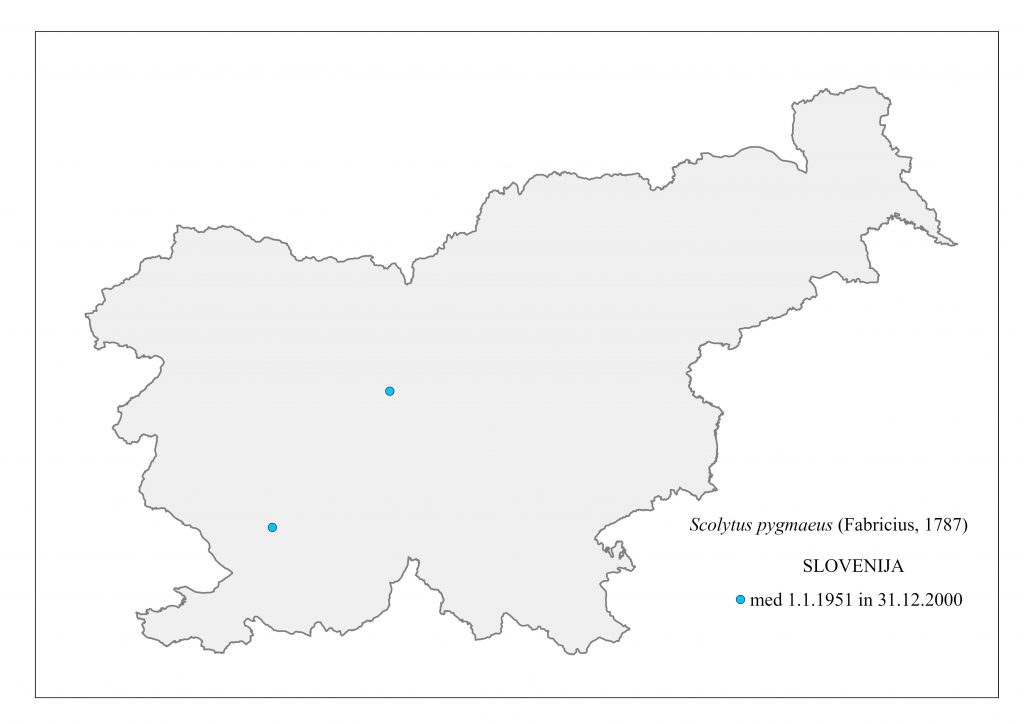32.06. Scolytus pygmaeus (Fabricius, 1787)
Presence
E: AB AU BE BU CR CT CZ FI FR GB GE GG GR HU IT LT MC NL PL PT RO SK SL SP ST SV SZ UK YU
A: TR
Older catalogs and keys – citations of name
Grüne 1979: Scolytus pygmaeus Fabricius, 1787; Freude, Harde, Lohse 1981: Scolytus pygmaeus Fabricius; Titovšek 1988: Scolytus pygmaeus (Fabricius); Pfeffer & Knížek 1993: S. pygmaeus (Fabricius, 1787); Pfeffer 1995: S. pygmaeus (Fabricius, 1787).
Figure 159: Scolytus pygmaeus, distribution map according to historical and recent data
Ecology and presence in Slovenia
The species is distributed in southern and central Europe, the northern Caucasus, Ukraine, Crimea and Turkey. It was found in only two sites in the 1970s, in Razdrto and Črnuče (Figure 159). Hosts are mainly Ulmus carpinifolia, U. levis, U. glabra, exceptionally Carpinus betulus, Fagus sylvatica, Prunus armenica, occasionally also Olea europaea. In Slovenia it was found only on Ulmus minor. It develops two generations per year. The maternal tunnel system is uniramous (sometimes biramous) longitudinal, the maternal galleries are short, 2-5 cm long. Length (adultus) is 1.5-2.5 mm. S. pygmaeus is also confirmed as a vector of the dangerous Dutch elm disease (Ophiostoma ulmi and O. novo-ulmi).

